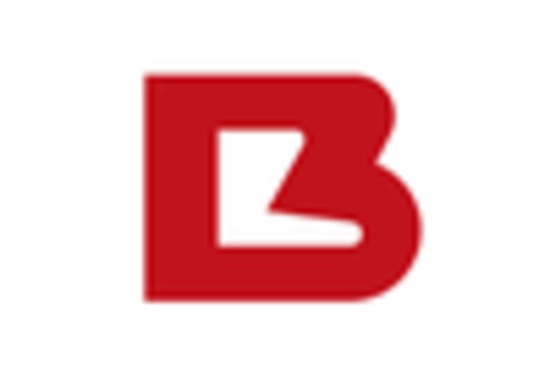Increasing Surgical Procedures
The rise in surgical procedures across various medical specialties is a notable driver for the Blood Warmer Market. As surgical interventions become more common, the need for maintaining normothermia during operations has gained prominence. According to recent data, the number of surgical procedures is projected to increase by approximately 5% annually, leading to a heightened demand for blood warmers. These devices are essential in preventing hypothermia, which can complicate surgical outcomes. Consequently, hospitals and surgical centers are increasingly investing in advanced blood warming technologies to enhance patient safety and improve recovery times. This trend indicates a robust growth trajectory for the Blood Warmer Market, as healthcare providers prioritize effective temperature management during surgical procedures.
Rising Incidence of Trauma Cases
The escalating incidence of trauma cases, including accidents and injuries, serves as a significant driver for the Blood Warmer Market. Trauma patients often require rapid blood transfusions, and maintaining the temperature of transfused blood is critical to patient outcomes. Data suggests that trauma cases are on the rise, with emergency departments reporting a steady increase in admissions. This trend necessitates the use of blood warmers to ensure that patients receive blood products at optimal temperatures, thereby reducing the risk of complications. As healthcare systems adapt to the growing demands of trauma care, the Blood Warmer Market is likely to experience substantial growth, driven by the need for effective temperature management solutions in emergency settings.
Growing Focus on Patient Safety Standards
The heightened focus on patient safety standards is a pivotal driver for the Blood Warmer Market. Regulatory bodies and healthcare organizations are emphasizing the importance of maintaining normothermia during medical procedures to prevent adverse outcomes. This focus has led to the establishment of guidelines that recommend the use of blood warmers in specific clinical scenarios, such as during surgeries and trauma care. As hospitals strive to comply with these standards, the demand for reliable blood warming solutions is expected to rise. The Blood Warmer Market is likely to benefit from this trend, as healthcare facilities invest in technologies that align with safety protocols and enhance overall patient care.
Aging Population and Associated Health Issues
The aging population presents a compelling driver for the Blood Warmer Market, as older adults are more susceptible to health complications that require surgical interventions and blood transfusions. As the demographic shift continues, the prevalence of age-related health issues, such as cardiovascular diseases and orthopedic conditions, is expected to rise. This trend necessitates the use of blood warmers to ensure that transfusions are administered safely and effectively. Data indicates that the population aged 65 and older is projected to double in the coming decades, further amplifying the demand for blood warming technologies. Consequently, the Blood Warmer Market is likely to experience significant growth, driven by the increasing healthcare needs of the aging population.
Technological Innovations in Blood Warming Devices
Technological innovations within the Blood Warmer Market are transforming the landscape of patient care. Recent advancements have led to the development of more efficient and user-friendly blood warming devices, which are crucial in various clinical settings. For instance, the introduction of portable and battery-operated blood warmers has expanded their usability in emergency situations, where rapid response is essential. Furthermore, the integration of smart technology allows for real-time monitoring of blood temperatures, enhancing safety protocols. As healthcare providers increasingly seek to adopt cutting-edge technologies, the Blood Warmer Market is poised for growth, driven by the demand for innovative solutions that improve patient outcomes and streamline clinical workflows.


















Leave a Comment